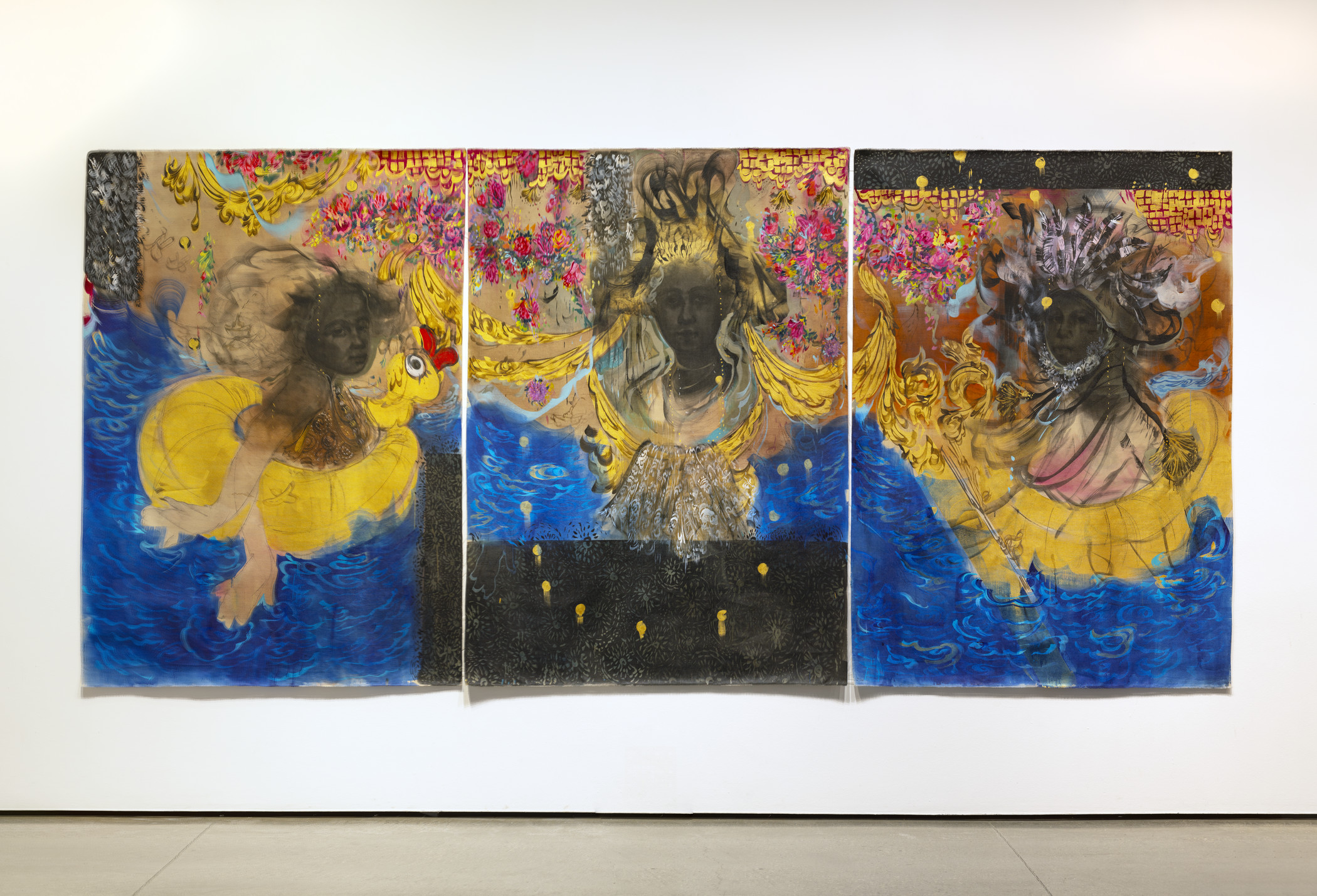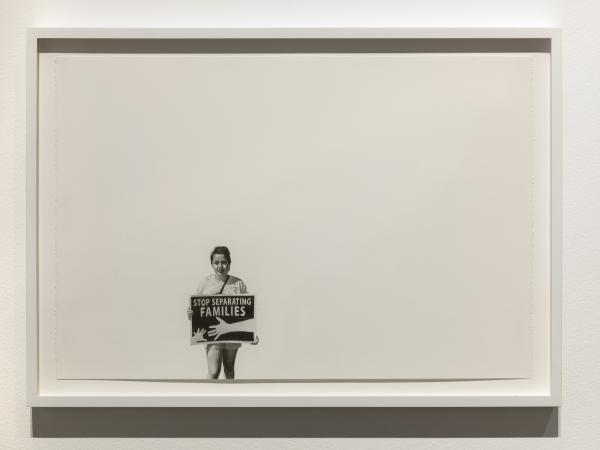In honor of Women’s History Month, we’re celebrating the contributions of women throughout art history, including artworks by women from LACMA’s collection. The new acquisitions highlighted here, made possible through the generosity of the Contemporary@LACMA (C@L) acquisitions group, have further expanded the range of important works by women artists in LACMA’s contemporary holdings.
Each year, C@L members gather at the museum to actively participate in building LACMA’s ever-growing contemporary art collection. LACMA curators present an artwork by a contemporary artist of their choosing, advocating for C@L’s support in purchasing their selected artworks for LACMA’s permanent collection.
Last November, the 2023 C@L acquisitions meeting focused on the theme of Global Feminisms. The works voted into the collection by C@L members span photography, painting, and drawing, and represent each artist's complex meditations on gender, politics, immigration, history, and memory.
Andrea Bowers
Stop Separating Families (May Day March, 2015, Los Angeles, California), 2016
Once called “one of America’s most important political artists” by the New York Times, Andrea Bowers has devoted her art and her life to protest against injustice and to action for change. In Bowers’s own words, her practice demonstrates “that art and activism are inseparable and have always been connected.”
Featured in Bowers’s much-lauded 2021 mid-career survey co-organized by the Hammer Museum and the MCA-Chicago, Stop Separating Families (2016) (pictured at top) is a prime example of her graphite drawings—the artist’s most sought-after works. Based on photos Bowers takes at demonstrations and other public gatherings, these solitary figures are typically cropped from the surrounding crowds and situated near the edge of Bowers’s composition. Stop Separating Families is drawn from what the artist witnessed at the 2015 May Day March in Los Angeles. Evoking images ranging from Michelangelo’s Creation of Adam in the Sistine Chapel ceiling to Delacroix’s Greece on the Ruins of Missolonghi, Bowers elevates an ordinary young girl into an iconic figure, raising up both the protagonist and her cause.

Scherezade García
Harvest of the Sea, 2023
Included in Scherezade García’s most recent, sold-out exhibition (Praxis, New York, 2023), Harvest of the Sea (2023) is a brilliant summation of her concerns with history, hybridity, migration, and memory. An interdisciplinary artist, García moved from the Dominican Republic to New York in 1986 to attend Parsons School of Design. Her dual identity as an islander has made her keenly aware of the role of the ocean to connect and divide people. Water becomes the stage of her exuberant, color-filled compositions, and a vector of the diasporic experience of her own community and beyond. This “liquid highway,” as the artist calls it, bridges people, their hopes, and their dreams.
In this grand composition, the deep cobalt of the ocean links three ethereal yet resilient female figures adrift at sea. Anchored by a flotation ring that symbolizes the precariousness of modern migration, they embody the multiple cultures and geographies that have come to shape Latin America in postcolonial times—Africa, Europe, and the Americas. Though separate, they are entangled through a luminous, golden sash and the swirling waves. This mixture of cultures is embodied by the cinnamon hue of the figures, which according to the artist results from mixing a set number of colors (white, black, yellow, red, and brown), and is therefore symbolically charged. The figures are neither portraits nor types but rather an amalgam of the important women in García’s life that she conjures through the act of memory.

Silke Otto-Knapp
The Reader, 2021
Silke Otto-Knapp (1970–2022) was a German-born artist active in Los Angeles and is best known for her monumental watercolors on canvas that, due to her unique working process, are layered and luminous in spite of their insistently monochromatic black-and-white palette. The Reader (2021) is enigmatic. Contained inside an oval frame, the figure appears lost in thought and largely hidden from view. The face and other distinguishing features recede into shadow while hands, a necklace, and a rectangular form that suggests a book float toward the surface. Though the title offers an individual conflated with an act—reading—the activity presented is not so straightforward. Though we cannot see eyes, the gaze appears averted, suggesting that the act depicted is not reading, but contemplation, a pause between pages.
Otto-Knapp often drew on art’s history in her work, and the inspiration for The Reader is no exception. Her source was a 1913 painting of the same name by the early 20th-century French artist Marie Laurencin. Laurencin’s reader is similarly not reading, but making space for her thoughts. For Laurencin, a queer avant-garde artist active at a time when few women were publicly visible as either, depicting a woman not presenting herself for the male gaze was a political act. Otto-Knapp similarly respects her subject’s privacy. We aren’t allowed access to their interior thoughts or the contents of the page in front of them. What is visible is hazy, and what we do see demands active looking.
For more information about C@L, contact contemporary@lacma.org.



